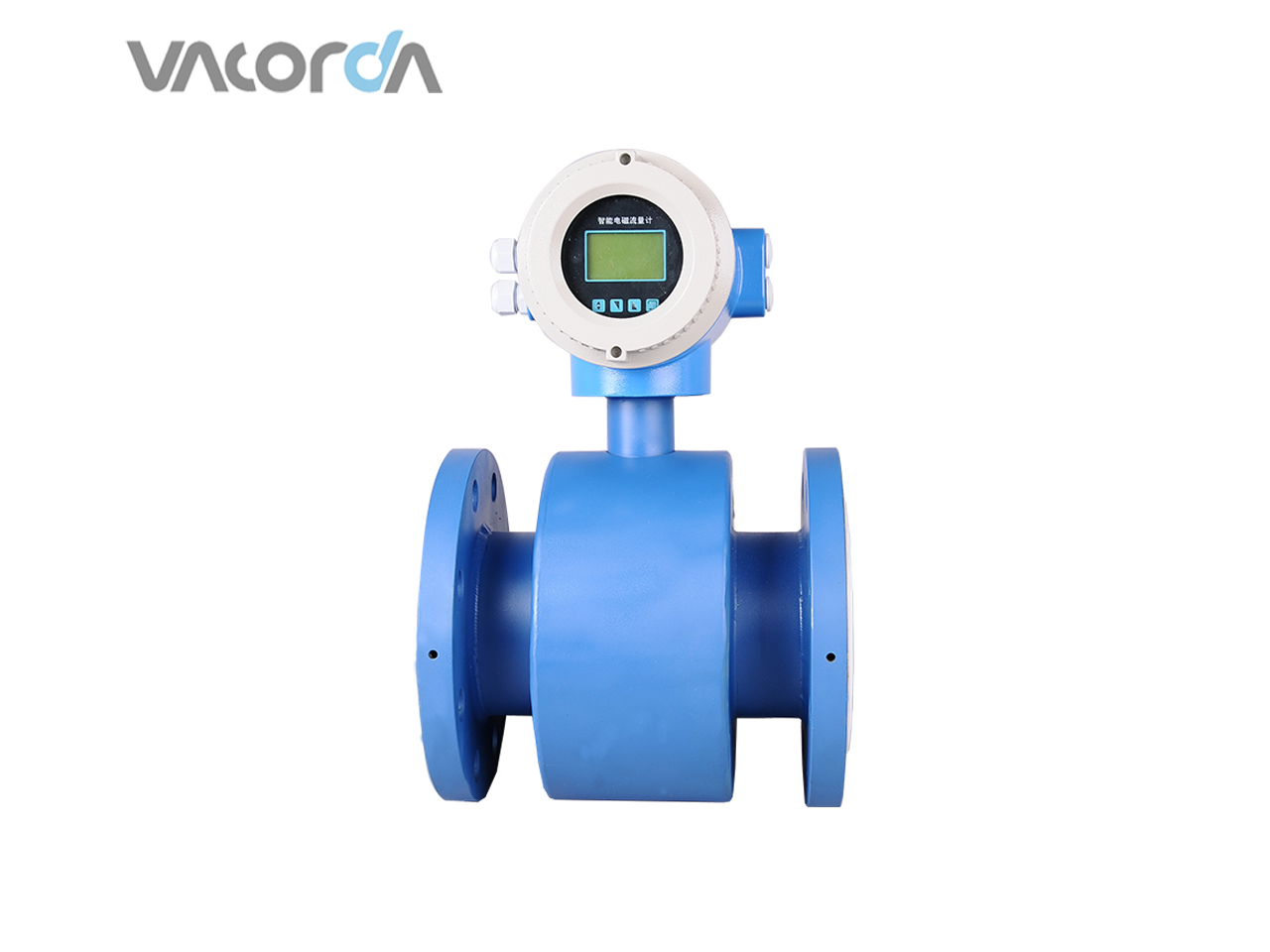In order to facilitate online testing of electromagnetic flowmeters, we suggest that new pipelines can be equipped with standard measurement pipe sections during system design to facilitate online testing of electromagnetic flowmeters in the future. The installation of the standard measuring pipe section should meet the requirements of the ultrasonic flowmeter for the front and rear straight pipe sections, and attention should be paid to ensure that the liquid is filled with the measuring pipe. At the same time, record the pipe parameters, pipe material, pipe outer diameter, pipe wall thickness, and pipe lining material and thickness. For the original old pipeline, select a measuring point on the pipeline to be tested that satisfies the use conditions of the ultrasonic flowmeter, install a section of stainless steel pipe, and record the parameters of the stainless steel pipe at the same time.Use the ultrasonic flowmeter certified by the statutory agency as a standard meter for online comparison to determine the measurement accuracy of the electromagnetic flowmeter under test. For the sewage electromagnetic flowmeter, it is generally selected when there is less suspended solids and the liquid temperature is kept stable. When conditions permit, it can be checked with clean water to improve the measurement accuracy of the ultrasonic flowmeter.How to ensure the accuracy of online detection? We believe that the following methods can be used to ensure the accuracy of online detection of electromagnetic flowmeters: 1. Make preparations before online detection. The accuracy and use of ultrasonic flowmeters for measuring fluid flow The knowledge of on-site working conditions is very closely related. The inspector should first determine the following information before starting the inspection:1.1. The following conditions should be met when selecting the probe installation location:(1) There is no excessive dust and corrosive gas in the workplace;(2) Straight pipe length: more than 10D on the upstream side, and more than 15D on the downstream side (when the flow rate is low, the requirements for straight pipe can be appropriately reduced);(3) There shall be no disturbance factors (such as pumps, valves, etc.) within 30D of the upstream side;(4) The fluid must be filled with pipes and must not contain bubbles or excessive impurities;(5) The pipe where the probe is installed should not have strong mechanical vibration;(6) Sufficient space is needed around the pipe where the probe is installed.1.2. The accurate values of the material of the pipeline being inspected, the outer diameter of the pipe, the wall thickness of the pipe, the material and thickness of the pipe lining, the medium in the pipe, the temperature of the medium, etc., are required to be measured and verified at the inspection site to ensure the accuracy of the measurement.1.3. Common flow points of on-site working conditions in order to detect the common flow points of users and improve the accuracy of online detection.1.4. The basic principle of selecting the ultrasonic flowmeter for online testing is the standard meter comparison method. Therefore, the ultrasonic flowmeter should be verified by the national legal metrological verification agency on a regular basis, and a valid verification certificate should be obtained.2. Online testingThis is a job with strong technical and empirical requirements. Therefore, it is necessary to carry out strict training for the inspectors, and especially require the staff to carry out online inspection work in a scientific manner. In actual use, we found that inaccurate measurement is mostly caused by improper probe installation. Therefore, the correct installation of the probe becomes the first problem. We believe that the following principles should be followed during the installation of the probe.(1) For horizontal pipelines, the probe should be installed within ±45° of the horizontal centerline;(2) Avoid installing the probe on the deformed part, flange or welding part of the pipeline;(3) Before installation, the probe installation surface should be treated. First, remove the rust and dirt on the pipe surface (if there is a protective layer on the pipe surface, the protective layer should be stripped off), so that the pipe wall surface is smooth and free of dirt. The cleaning range should reach the entire circumference of the probe installation distance L+200mm width;(4) Coupling the couplant to the entire emitting surface of the probe, do not form bubbles;(5) Coat the surface of the pipeline with silicone grease;(6) Stick the probe firmly on the pipe wall, and fix the probe with a steel band (note: the emission directions of the two probes must be opposite).Input the working condition parameters verified by on-site measurement into the flowmeter and check the signal reception condition, and then the test can be started after confirming that it is working normally. Different flow points are determined according to the common flow rate during detection, which can be adjusted by water pumps or valves, and the flow indication values of the standard meter and the tested flow meter are collected at the same time to determine the indication error of the tested flow meter. When reading the flow rate display value, it should be carried out when the flow rate is stable, and read about 10 display values in the same period of time and take the average value to reduce the error caused by the reading.
Post time: 21-09-21
